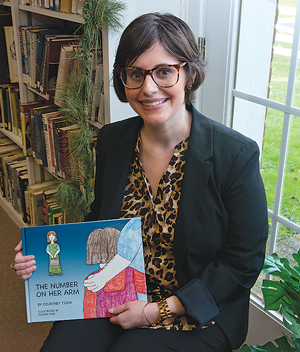Six numbers that tell a tale of life

ALUMNI & FRIENDS | “Grandma, what does the number on your arm mean?”
When a child asks a Holocaust survivor such a question, what should the answer be?
In the case of Courtney Tisch, AS04—who asked that very question as a 10-year-old—her grandmother’s answer would forever change how she viewed life’s true value, and love’s real meaning. It was an experience that would forever shake her, but ultimately inspire her to write a children’s book about their conversation.
With The Number on Her Arm, self-published last September, the third-grade teacher was seeking a way to memorialize her late grandparents Vicky and Zelman Gorewicz and also help adults teach essential truths about an uncomfortable topic to children in fourth through sixth grades.
In the book, the grandmother gently tells the little girl of the concentration camps and touches on the hatred that inspired them. But she quickly shifts the focus from the horrors and stresses the hope that endured. In the end, the girl learns that the ugly tattoo has come to symbolize something bigger—the possibility that freedom and love ultimately prevail.
“I had always just felt proud they were my grandparents, because whenever they talked about the Holocaust, they talked about it with absolutely no anger or bitterness,” says Tisch, now living in Washington, D.C. “Hearing those stories taught me that if my grandparents can survive the most unbelievable horrors and still live their lives for family, doing things for others, then gosh, I should try to live my life that way, too.’’



